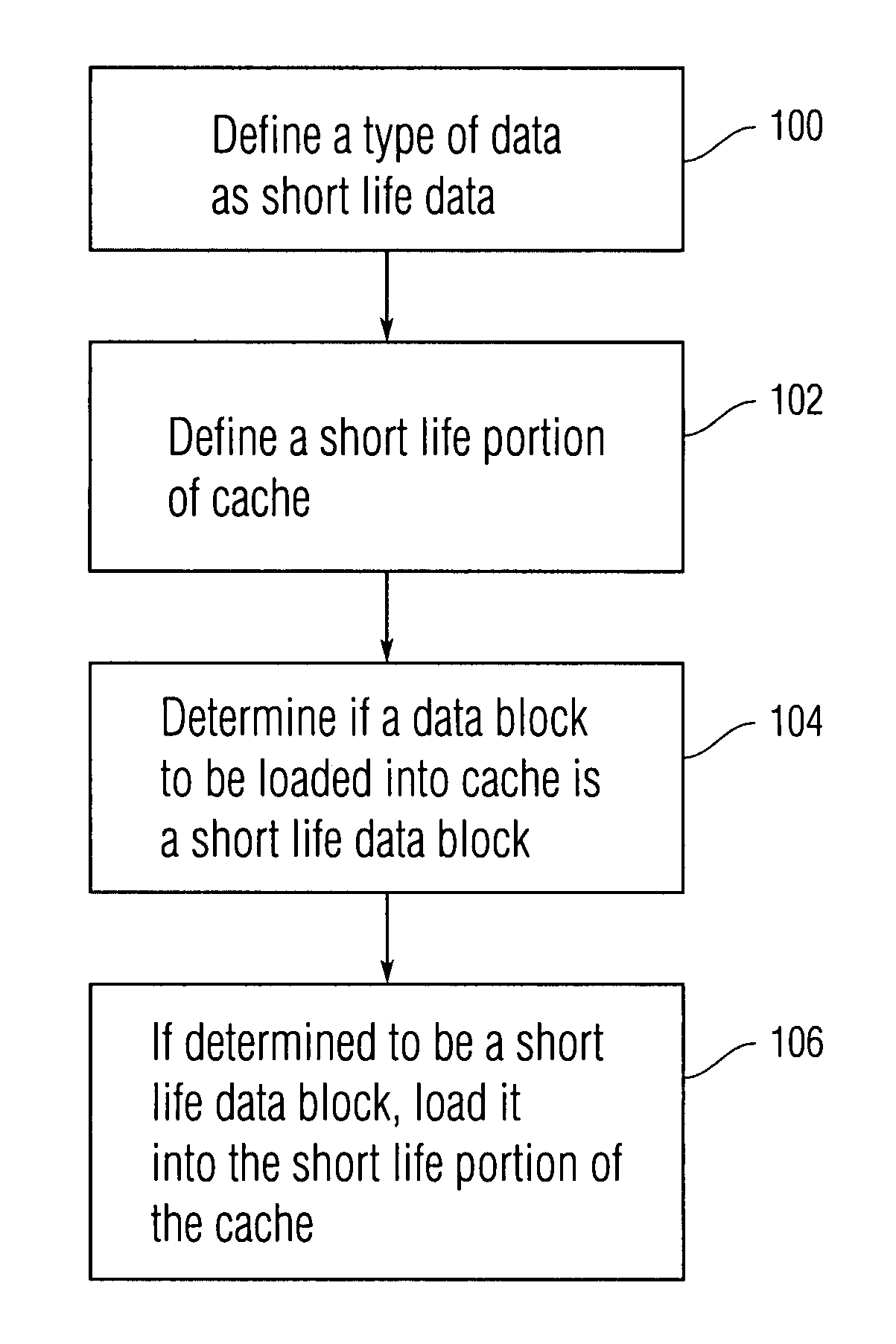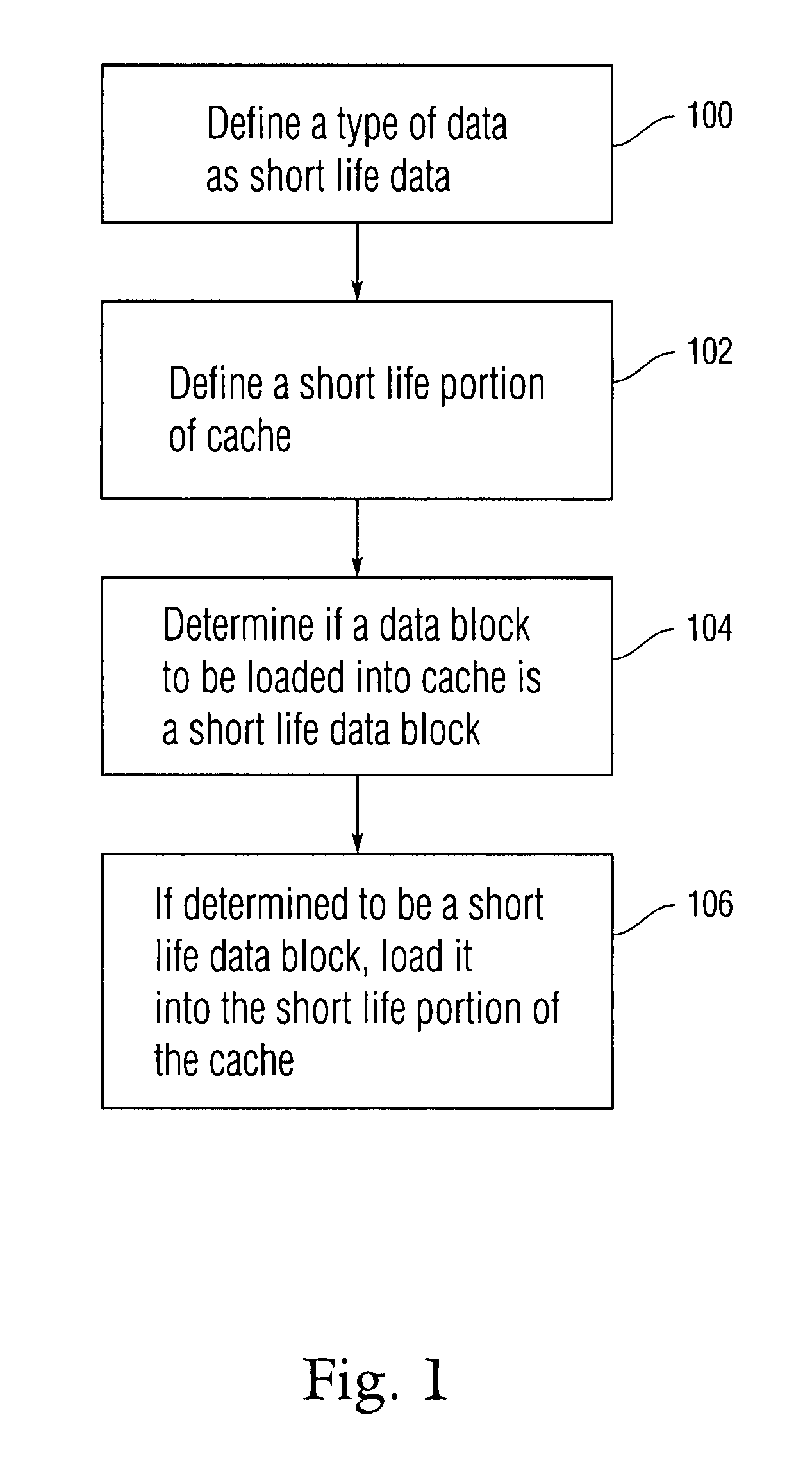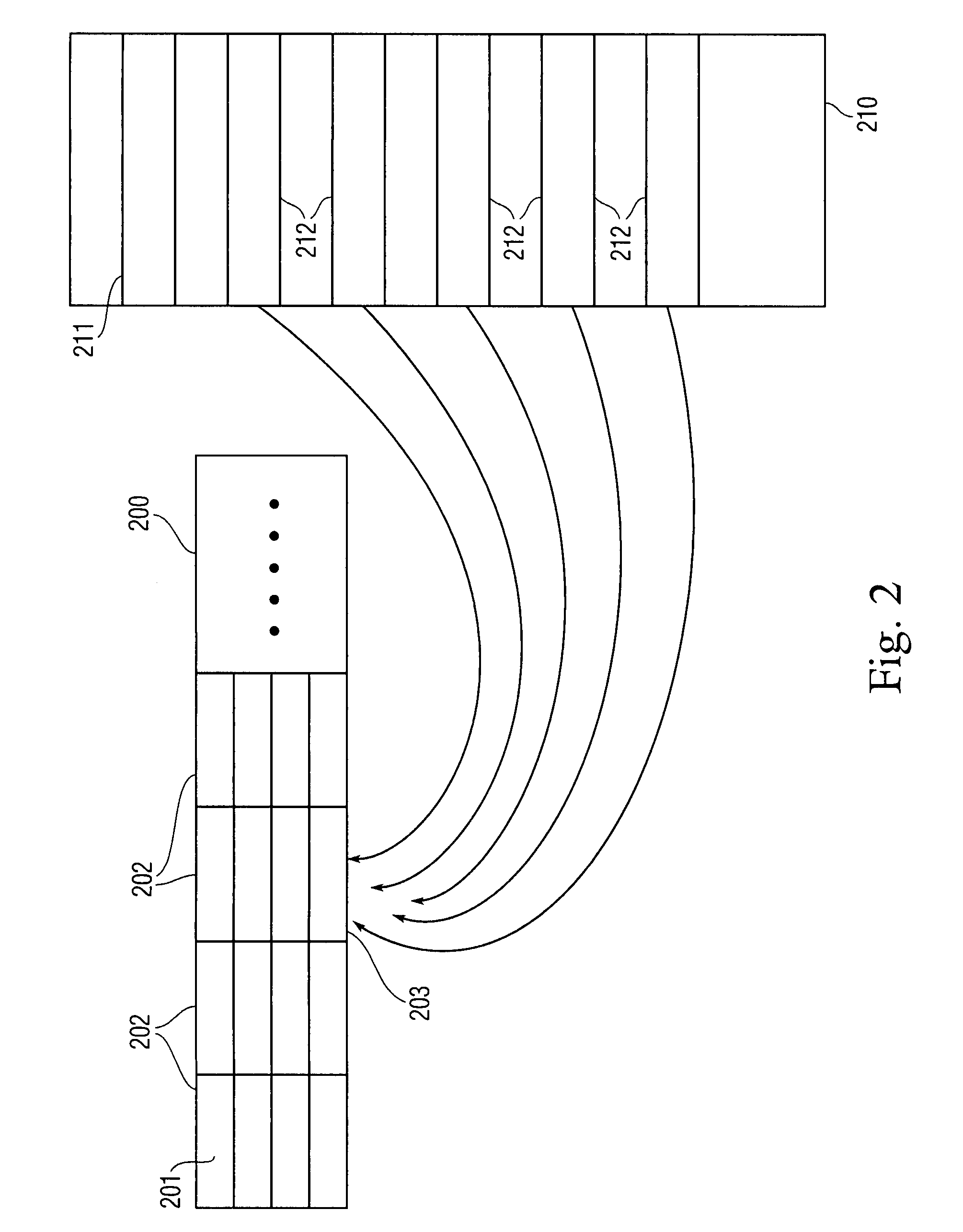Cache pollution avoidance
a cache and memory technology, applied in the field of cache memory management in electronic systems, can solve the problems of affecting the efficiency of cache management, so as to reduce the pollution of cache. and optimize the effect of cache managemen
- Summary
- Abstract
- Description
- Claims
- Application Information
AI Technical Summary
Benefits of technology
Problems solved by technology
Method used
Image
Examples
Embodiment Construction
[0022]In the following description of preferred embodiments, reference is made to the accompanying drawings which form a part hereof, and in which it is shown by way of illustration specific embodiments in which the invention may be practiced. It is to be understood that other embodiments may be utilized and structural changes may be made without departing from the scope of the preferred embodiments of the present invention.
[0023]Although embodiments of the present invention are described herein in terms of host bus adapters (HBAs), it should be understood that the present invention is not limited to host bus adapters, but is generally applicable to any devices that utilize cache memory.
[0024]Embodiments of the present invention are directed to a scheme in which information as to the future behavior of particular software is used in order to optimize cache management and reduce cache pollution. While, as discussed above, it is often considered desirable to keep the cache system inde...
PUM
 Login to View More
Login to View More Abstract
Description
Claims
Application Information
 Login to View More
Login to View More - R&D
- Intellectual Property
- Life Sciences
- Materials
- Tech Scout
- Unparalleled Data Quality
- Higher Quality Content
- 60% Fewer Hallucinations
Browse by: Latest US Patents, China's latest patents, Technical Efficacy Thesaurus, Application Domain, Technology Topic, Popular Technical Reports.
© 2025 PatSnap. All rights reserved.Legal|Privacy policy|Modern Slavery Act Transparency Statement|Sitemap|About US| Contact US: help@patsnap.com



